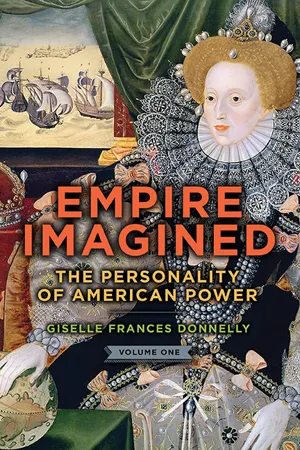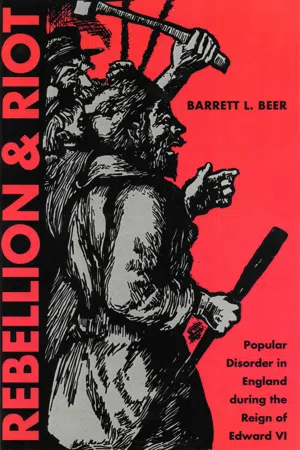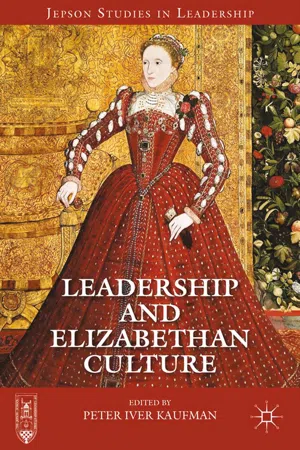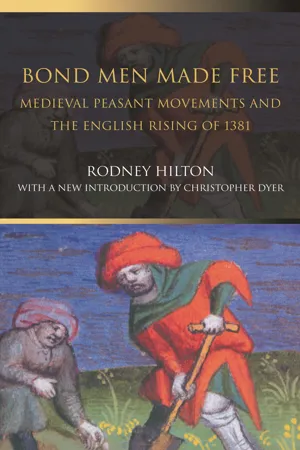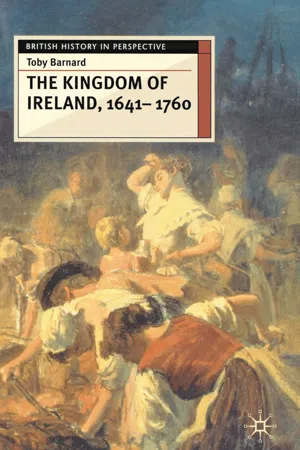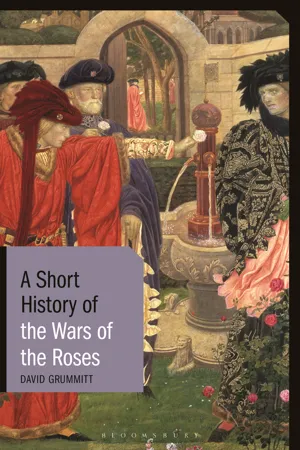History
Northern Rebellion
The Northern Rebellion, also known as the Rising of the North, was a failed uprising in 1569 against Queen Elizabeth I of England. It was led by Catholic nobles who opposed the Protestant reforms and religious policies of the queen. The rebellion aimed to replace Elizabeth with Mary, Queen of Scots, but it was swiftly suppressed, leading to severe consequences for the rebels.
Written by Perlego with AI-assistance
Related key terms
6 Key excerpts on "Northern Rebellion"
- eBook - ePub
Empire Imagined
The Personality of American Power, Volume One
- Giselle Frances Donnelly(Author)
- 2022(Publication Date)
- SUNY Press(Publisher)
3
THE Northern Rebellion
As a military event, the Northern Rebellion of 1569 merits nothing more than the tiniest mention. The largest engagement, the “battle” near Naworth Castle of February 20, 1570, was little more than a small and apparently poorly planned and executed ambush of royal forces by the followers and tenants of Lord Leonard Dacre, a “warlord” of the borderlands between Scotland and England who was not even the leading rebel. Precipitously attacking the troops of Henry Carey, Baron Hunsdon, cousin to Queen Elizabeth, Dacre’s footmen charged and were crushed, with perhaps three hundred killed. Dacre was particularly rash in that a reinforcing force of fifteen hundred Scots—as many troops as Hunsdon had—was about a day’s march away.1At the same time, the larger story of the rebellion—the conditions and the conspiring that led to the revolt, the government’s response and the rebellion’s consequences—is a kind of microcosm of Elizabethan strategy-making, touching on almost every aspect of the regime’s strategic architecture: the political effects of the confessional divides occasioned by the Reformation; the stability, durability, and legitimacy of the queen’s rule in England itself, particularly in its northern “marches”; the unending need for action in the British “near abroad,” particularly in Scotland; England’s position in the European balance of power; and the profound shift in priorities that saw Spain, for a century, displace France as the primary great-power threat. The inherently complex crisis was further complicated by the intrigues and entanglements of the queen’s council, court, and most powerful nobles; policy was intertwined with personality, not least including that of Elizabeth herself.Much of the contest and crisis revolved around religion and how faith intertwined with politics, be it personal, domestic, or international. Elizabethan Protestantism was a quicksilver phenomenon, a doctrinal mishmash, institutionally weak and a subject of continuous definition and debate across all classes of Englishmen, many of whom were well informed about the European religious debates of the previous fifty years. As Patrick Collinson has written, the Elizabethan era was one of “abortive reform. In the event the renewal of religious life, the formation of a ‘godly preaching ministry’ and a profoundly moral transformation of society was to come not through legislation and the overhaul of institutions but by the religious force of Protestantism itself in its apostolate at the grass roots.”2 - eBook - ePub
Rebellion and Riot
Popular Disorder in England During the Reign of Edward VI
- John A. Andrew, III(Authors)
- 2000(Publication Date)
- The Kent State University Press(Publisher)
4Rebellion played a smaller role during the reign of Elizabeth, but even Gloriana felt the sting of revolt in 1569 when the earls of Northumberland and Westmorland restored the Latin mass at Durham Cathedral, called for the arrest of Sir William Cecil, the queen’s leading adviser, and demanded the restoration of Roman Catholicism. Less threatening than the mid-Tudor rebellions, the rising of the northern earls revealed the deep-rooted discontent of the aristocracy and its tenants. The last rising of the Tudor era took place in 1601, only two years before the death of Elizabeth, when the Earl of Essex, frustrated by his loss of royal favor, led 200 supporters up Fleet Street, London, in a desperate and futile attempt to restore his political ascendancy.5 A survey of Tudor rebellions leads to the inescapable conclusion that every rebel captain whether artisan or earl and every popular cause — religious, political, or economic — suffered defeat. What is remarkable and usually overlooked by historians is the courage of generations of Tudor rebels to resist oppression and go down to defeat in the face of overwhelming odds.Although popular disorder was endemic throughout the sixteenth century, the pattern of rebellion and riot was extremely diverse. The rebellion of Henry Tudor in 1485 began as a royalist conspiracy against the Yorkists, and the dynastic interests of the Courtenays and Mary Stuart played important roles in later risings. When political opposition to the Tudors was not dynastic, it usually included conflict between court and country. For example, the northern aristocracy in 1536 and 1569 and the western gentry in 1549 vigorously opposed policies emanating from the court. The leadership of Thomas Cromwell and William Cecil aroused regional discontent; remote counties feared centralizing reforms of all kinds; and in 1549 the western gentry saw the Edwardian Reformation as little more than the program of court politicians supported by a clique of heretical clergy. After Henry VIII’s break with Rome in the 1530s, religion emerged as a divisive issue that fired political and social instability. Only under Edward VI did Catholics and Protestants rise at the same time. Religious unrest during the reigns of Henry VIII and Elizabeth came primarily from Catholics opposed to the royal supremacy, the monastic dissolution, and innovations in the church, while Mary’s opponents were exclusively Protestant. Real or imagined social and economic grievances played a part in many rebellions, particularly the Cornish Rebellion of 1497, the Pilgrimage of Grace, and Kett’s Rebellion in Norfolk. Riots almost always stemmed from economic issues; frequently heard grievances concerned rent payments, food prices, enclosure, and property rights. - eBook - ePub
- P. Kaufman, P. Kaufman(Authors)
- 2013(Publication Date)
- Palgrave Macmillan(Publisher)
C H A P T E R F O U R Mary Queen of Scots and the Northern Rebellion of 1569K. J. KESSELRINGThe deposition of Queen Mary of Scotland in 1567 proved that even in a monarchical system of inherited status, leadership was a matter not just of position but also of process and practice. Mary’s flight to England in May 1568 painted this lesson even more starkly for Elizabeth, her “sister queen.” Her continued presence in the country tested Elizabeth’s ability to put this lesson into effect. Some thought Mary’s claim to the English throne stronger than that of Elizabeth, and many more thought her at least the heir apparent to succeed their present, childless Queen. Her Catholicism made her, in some eyes, an even more compelling candidate. But it was not just Mary and her supporters who challenged Elizabeth’s abilities: her opponents did, too.Mary continued to test Elizabeth’s political acumen and agility until—and, indeed, even after—the moment the Scottish queen went to her death in 1587. The period from Mary’s arrival to the Duke of Norfolk’s execution in 1572 for his part in plots on her behalf marked a particularly acute period of stress, with the Northern Rebellion at its apex. In November 1569, the Earls of Northumberland and Westmorland raised their banners and a force of some 6,000 men in an attempt to bring about England’s return to Catholicism. They failed, but only after stoking serious fears about the security of the regime. The intensity of those fears showed in the savagery of Elizabeth’s response: exacting perhaps the highest judicial death toll seen in any of the rebellions in sixteenth-century England, she had some “600 odd” participants killed under martial law.1 Some commentators, Elizabethan and more recent, have assumed that the rebels planned to replace their Protestant Queen with her Catholic cousin Mary Stewart. A few go further and suggest that Mary was complicit in the revolt.2 In such accounts, the Northern Rising of 1569 becomes one of the first items on Mary’s long list of plots against Elizabeth. But what, if any, part did - No longer available |Learn more
Bond Men Made Free
Medieval Peasant Movements and the English Rising of 1381
- Rodney Hilton(Author)
- 2004(Publication Date)
- Routledge(Publisher)
But, whether reactionary or progressive, they were all-class movements of peasants, yeomen, artisans and merchants under their natural leaders, the local gentry. There is quite a strong case for interpreting in this sense the rising of 1450, usually associated with the name of Jack Cade, as well as the various provincial risings in the first half of the sixteenth century. Is it justifiable, however, to extend this interpretation to the events of 1381? 13 13 M. E. James, ‘Obedience and dissent in Henrician England: the Lincolnshire rebellion of 1536'. P & P, 1970, p 8; B. Wilkinson, Constitutional History of England in the 15th Century, 1964, p 37; Dobson, p 380. There is more than one way of approaching this problem. We may again look at the social composition of the rebel bands. There is no question here of provincial society under the ‘natural' leadership of the gentry, in spite of the occasional participation of discontented landowners in East Anglia such as Sir Roger Bacon, who in any case played second fiddle to the dyer, Geoffrey Litster. As we have seen, the composition of the rebel armies seems to have been a fair cross-section of rural society, but, apart from a few exceptions, below the ranks of the nobility, the gentry, the lawyers and the beneficed ecclesiastics. Insofar as we can use medieval social categories, it was a broadly-based popular uprising of the third estate (but excluding the London merchant capitalists) against the other two components of the tripartite society of the middle ages, not a movement of all social groups against a narrow governing clique. There is not the slightest sign of even the beginnings of an alliance between the rebels and any group which had a part to play in the accepted political game: in other words, no friends, no apologists even, either in Parliament or in the Convocations of clergy - eBook - ePub
- Toby Barnard(Author)
- 2017(Publication Date)
- Bloomsbury Academic(Publisher)
Chapter 2: Rebellions and Reconquests, 1641–1691 The Uprising of 1641 Late in October 1641, Catholics in Ulster killed Protestant neighbours, ejected more from their homes and seized the settlers’ properties. The insurgents had intended to synchronize their actions with the capture of the English governors in Dublin. Once they controlled the government, it was expected that mastery of all Ireland would soon follow. But the Dublin plot was forestalled. Despite this reverse, others throughout the kingdom soon joined the bands in Ulster. The insurrection was not suppressed until early in 1653. Immediately questions propose themselves. Why did Ireland rebel? Why did the revolt last so long? The readiest answer is that the insensitive measures imposed by England estranged the indigenous political élite (or substantial sections of it). Provocations worsened in the 1630s, particularly under Charles I’s abrasive deputy in Dublin, Sir Thomas Wentworth. Yet, the rebels were not as one either in their timing or intentions. The trouble spread quickly beyond small groups of disgruntled landowners, lawyers and priests, to a wider constituency, sometimes disparaged as ‘the rascal multitude’. 41 In time it would be convenient to blame the uprising on those outside conventional politics. Many more Catholics than MPs, landowners, lawyers and office-holders joined the struggle. Desperation, arising from physical privations, helps to explain the widespread activism. Undoubtedly there were tangible resentments: loss of lands, livelihoods and status to the newcomers. Debts bred discontents. Then, too, late in the 1630s, bad weather depressed already modest means, bringing more to – and over – the brink of destitution - eBook - ePub
- David Grummitt(Author)
- 2014(Publication Date)
- I.B. Tauris(Publisher)
In the event the jousts at Smithfield were cut short by the death of Philip the Good on 15 June 1467. This was the opportunity Edward had waited for in order to press ahead with his diplomatic encirclement of France. Alliances were cemented with Brittany and Castille and in November the king sealed a trade treaty with Burgundy. At the same time Edward’s sister, Margaret, appeared before the council and agreed to marry Charles, the new Duke of Burgundy. This was duly ratified in February 1468 and in May the king announced to parliament his intention to invade France. The response was positive in the form of a substantial grant of taxation, but the king’s policy was a risky one. He had made unpopular trade concessions to the Burgundians, borrowed heavily to pay his sister’s dowry, and alienated his most powerful subject, the Earl of Warwick. By the end of 1468 Edward’s policies at both home and abroad were beginning to destabilise the realm. Rumours of Lancastrian plots abounded: a major conspiracy involving the London alderman, Sir Thomas Cook, and several reconciled Lancastrians, such as Sir Gervase Clifton, was uncovered. More sinisterly, committed Yorkists and servants of the Earl of Warwick, like John, Lord Wenlock, were also implicated. Rumours spread on the continent that Warwick was in secret negotiations with the Lancastrians in exile or that he planned to place the king’s younger brother, the Duke of Clarence, on the throne. These rumours Earl Richard refused to even grace with an answer when summoned to appear before the king. Local unrest broke out in Kent and in the midlands in 1468 and elsewhere disquiet arose over the influence of some of Edward’s favoured courtiers. Early in 1469 Thomas Hungerford and Henry Courtenay were arrested in the south-west and subsequently executed, principally, it was rumoured, because Humphrey, Lord Stafford of Southwick, coveted the Courtenay earldom of Devon. The rumours appear to have been proved true in May when Stafford was created Earl of Devon.REBELLION AND DEPOSITIONBy the beginning of 1469 Edward IV’s authority was seriously compromised. He had reneged on his promise to invade France (but kept the taxation granted for this purpose) and grasping courtiers were dominating the king’s counsel and royal patronage, while powerful magnates of the king’s own blood were excluded from their rightful position in the realm. If this litany of royal wrongdoing had a familiar ring to it, it was precisely because the king’s opponents, principally the Earl of Warwick, decided to portray Edward’s regime in this way, reviving the ‘commonweal’ language used by the Yorkist lords in 1459–61. Warwick decided to make his move in June. In April there had been a popular uprising in Yorkshire, led by one Robin of Redesdale. The rebels’ grievances were the familiar ones (taxation, evil counsellors, and local misgovernment), but there is nothing to suggest that Warwick was involved. Indeed, his brother, the Earl of Northumberland, appears to have suppressed it without difficulty. However, as soon as this rebellion was suppressed the county rose again, this time led by one Robin of Holderness. The principal grievance this time was local clerical taxation, but the rebels also demanded the restoration of the Percy family to the earldom of Northumberland. Later Tudor chroniclers identified Warwick’s hand behind these events but this seems unlikely and before long John Neville had crushed that rising too.A third rising in June, however, was far more serious and seems certain to have been engineered by Warwick. It is unclear whether the earl had planned this rising in advance or, like the Duke of York before him, he had merely taken advantage of his own popularity among the commons and appropriated their grievances and political platform to his own ends. The rebel leader again called himself Robin of Redesdale, but on this occasion he appears to have been a member of the Conyers family, long-standing Neville servants. The head of the family, Sir John, was Warwick’s steward in Richmondshire and the rebellion in effect mobilised the Nevilles’ Middleham affinity against the king. At the same time Warwick put the second part of his plan into action. On 6 July he crossed to Calais in the company of Archbishop Neville, his daughter Isabel, and the king’s brother, George, Duke of Clarence. There, on 11 July, he married his daughter to Clarence against the king’s express wishes, and on the following day the rebel lords issued a manifesto ‘for the honoure and profite of oure seid sovereyn Lord and the comune welle of alle this his realme.’8
Index pages curate the most relevant extracts from our library of academic textbooks. They’ve been created using an in-house natural language model (NLM), each adding context and meaning to key research topics.
